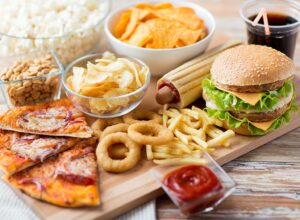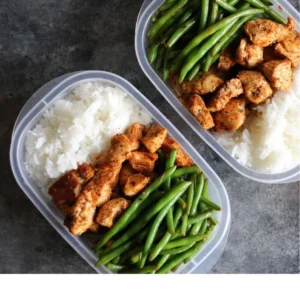Introduction
Who doesn’t like eating more? I know I do. What if there was a way to eat more food for the SAME amount of calories? I’m assuming you’d be in caloric heaven. In the quest for healthier eating habits, volume eating emerges as a powerful strategy. By focusing on foods that offer high volume with fewer calories, you can satisfy your appetite while managing your weight effectively. In this comprehensive guide, we’ll explore what volume eating entails, its benefits, provide you with ten delicious high-protein volume eating recipes, and offer practical tips to incorporate volume eating into your daily routine.
Key Principles of Volume Eating

Volume eating revolves around the concept of consuming foods that have a high volume relative to their calorie content. This approach not only helps in feeling full and satisfied but also ensures you get essential nutrients without excess energy intake. And no, this does not mean stuffing your face with pizza and cookies, much like a dirty bulk. With volume-eating, the goal is usually to cut weight. Incorporating plenty of fruits, vegetables, whole grains, and lean proteins is fundamental to achieving this balance.
Benefits of Volume Eating
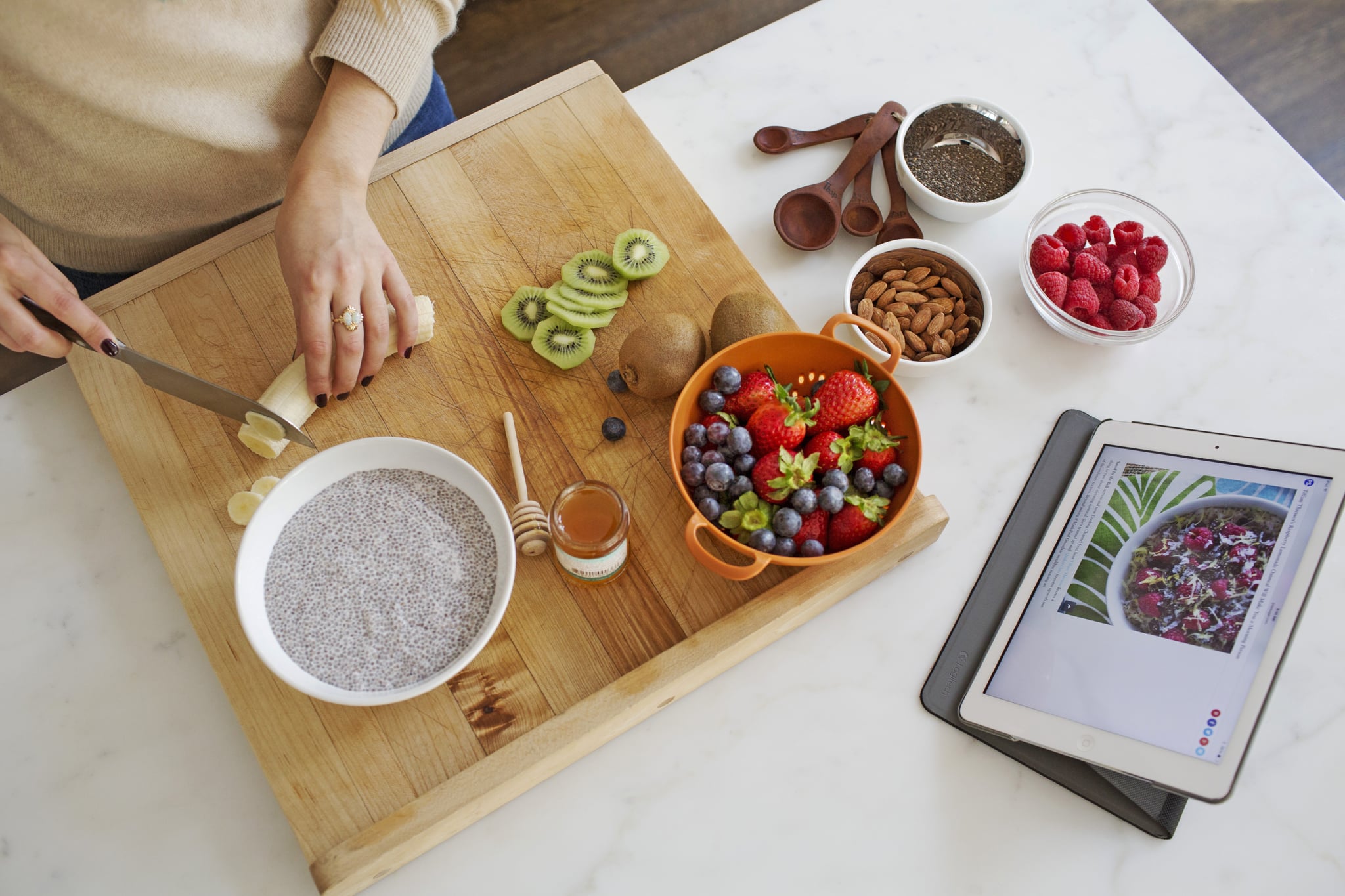
The benefits of volume eating extend beyond satiety. By opting for nutrient-dense, low-calorie foods, you can improve your overall nutritional intake, increase fiber consumption, and support weight management goals. This approach promotes a healthier lifestyle by reducing the likelihood of overeating while enhancing meal satisfaction. In other words. take in less calories with less calorically dense food. So that means cutting the ice cream and hamburgers.
Studies have shown that diets rich in high-volume, low-calorie foods can help individuals maintain a healthy weight and reduce the risk of chronic diseases such as diabetes and cardiovascular conditions. Additionally, the high fiber content in many volume eating recipes promotes digestive health and helps stabilize blood sugar levels, making it an ideal dietary choice for those looking to improve their overall well-being.
Top 10 High-Protein Volume Eating Recipes
Volume Eating Recipes #1: Grilled Chicken and Vegetable Skewers

As someone who would eat these on the regular during barbeques, these are perfect for anyone wanting to dip their fingers in volume-eating!
Ingredients:
- Chicken breast, cubed
- Bell peppers (red, yellow, green), cut into chunks
- Red onion, cut into wedges
- Cherry tomatoes
- Olive oil, garlic, salt, and pepper for seasoning
Preparation:
- Thread chicken, bell peppers, red onion, and cherry tomatoes onto skewers.
- Brush with olive oil and season with garlic, salt, and pepper.
- Grill until chicken is cooked through and vegetables are tender.
Nutritional Highlights: High in protein, low in calories, and packed with vitamins and minerals.
Volume Eating Recipes #2: Quinoa and Black Bean Salad

I can’t quite testify to quinoa yet (I know that I need to), but anything with black beans is a win in my book. For those who want the satiety of a salad without missing gout on some protein, here’s a great option!
Ingredients:
- Cooked quinoa
- Black beans, drained and rinsed
- Corn kernels
- Cherry tomatoes, halved
- Fresh cilantro, chopped
- Lime juice, olive oil, cumin, salt, and pepper for dressing
Preparation:
- In a bowl, combine quinoa, black beans, corn kernels, cherry tomatoes, and cilantro.
- Whisk together lime juice, olive oil, cumin, salt, and pepper for dressing.
- Toss salad with dressing until well combined.
Nutritional Highlights: Rich in protein from quinoa and black beans, fiber, and essential nutrients.
Volume Eating Recipes #3: Greek Yogurt Parfait
.jpg%3fformat%3d1500w&ehk=DnoEqReJA6BT7%2bsuWtf0pMBjp5VcMItmySVal%2beSBO0%3d&risl=&pid=ImgRaw&r=0)
This I can testify to. I eat Greek Yogurt with everything, and I cannot stress the benefits that is has in regard to protein and nutritional value. For those of you having a hard time cutting out the cake and ice cream, this one is for you!
Ingredients:
- Greek yogurt (plain or flavored)
- Fresh berries (strawberries, blueberries, raspberries)
- Granola (choose a low-sugar variety)
- Honey or maple syrup (optional)
Preparation:
- In a glass or bowl, layer Greek yogurt, fresh berries, and granola.
- Drizzle with honey or maple syrup if desired.
Nutritional Highlights: High in protein from Greek yogurt, antioxidants from berries, and energy from granola.
Volume Eating Recipes #4: Tofu Stir-Fry with Vegetables

As someone of Asian descent, I have learned that you simply cannot go wrong with a good stir fry. However, as I have seen from personal experience, those stir fry calories can add up quick. So, here’s a lighter caloric option!
Ingredients:
- Firm tofu, cubed
- Mixed vegetables (broccoli, bell peppers, snap peas)
- Soy sauce, garlic, ginger, sesame oil
- Brown rice or quinoa (optional, for serving)
Preparation:
- Stir-fry tofu cubes in sesame oil until lightly browned.
- Add mixed vegetables, soy sauce, garlic, and ginger.
- Cook until vegetables are tender-crisp. Serve over brown rice or quinoa if desired.
Nutritional Highlights: High in plant-based protein from tofu, fiber from vegetables, and essential vitamins.
Volume Eating Recipes #5: Lentil and Vegetable Soup

If you’re under the weather, but don’t want to lose your volume-eating streak, then this is the meal for you! With it being soup, you can get more bang for your buck, and have volume-eating heaven!
Ingredients:
- Green lentils, rinsed
- Carrots, celery, onion, diced
- Vegetable broth
- Tomatoes, diced
- Garlic, thyme, bay leaf
- Spinach leaves (optional)
Preparation:
- In a large pot, sauté onion, carrots, and celery until softened.
- Add garlic, thyme, bay leaf, lentils, tomatoes, and vegetable broth.
- Simmer until lentils are tender. Stir in spinach leaves before serving.
Nutritional Highlights: High in protein and fiber from lentils, vitamins from vegetables, and low in calories.
Volume Eating Recipes #6: Baked Salmon with Asparagus
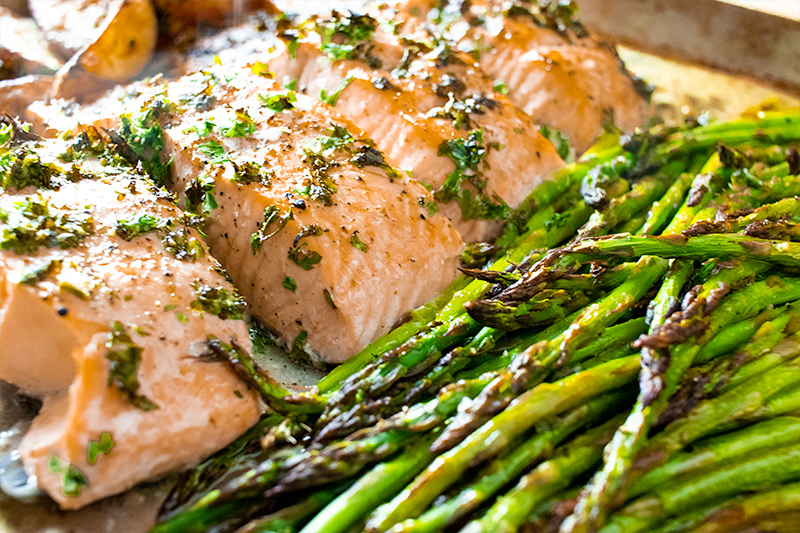
Now, I know salmon isn’t for everyone, much less seafood in general. But personally, I love me a good salmon. And for those of you seafood lovers, you’ll love this recipe too! Even though fish can be calorically dense, replacing the salmon with a far less caloric dense fish, or even shrimp, will produce the same yummy effect!
Ingredients:
- Salmon fillets
- Asparagus spears
- Lemon, garlic, olive oil
- Salt and pepper
Preparation:
- Preheat oven to 400°F (200°C).
- Place salmon fillets and asparagus spears on a baking sheet.
- Drizzle with olive oil, lemon juice, garlic, salt, and pepper.
- Bake for 15-20 minutes until salmon flakes easily with a fork and asparagus is tender.
Nutritional Highlights: Rich in omega-3 fatty acids from salmon, protein, and vitamins from asparagus.
Volume Eating Recipes #7: Chickpea and Spinach Curry
![20-Minute Chickpea and Spinach Curry [Vegan, Gluten-Free] - One Green ...](https://149366112.v2.pressablecdn.com/wp-content/uploads/2017/03/chickpea-and-spinach-curry.jpg)
Again, you simply cannot go wrong with a good curry. Even if it is chickpea (sorry my non-meat readers). For a vegan protein-powered punch, here’s a great recipe just for you!
Ingredients:
- Chickpeas, drained and rinsed
- Spinach leaves
- Coconut milk
- Curry powder, garlic, ginger, onion
- Brown rice or naan bread (optional, for serving)
Preparation:
- Sauté onion, garlic, and ginger in a pan until softened.
- Add curry powder and cook for another minute.
- Stir in chickpeas, coconut milk, and spinach leaves.
- Simmer until spinach wilts. Serve with brown rice or naan bread if desired.
Nutritional Highlights: High in protein and fiber from chickpeas, iron from spinach, and warming spices.
Volume Eating Recipes #8: Turkey and Vegetable Lettuce Wraps

Lettuce wraps are simply perfect for volume eating. By replacing the carb-heavy tortilla with a lighter lettuce, you exponentially increase the amount of wraps you consume. When you combined with protein such as lean turkey, whose thermic index burns 30% of the calories consumed, you get the perfect volume-eating recipe. Be warned though, once you start gorging, it’ll be hard to stop!
Ingredients:
- Ground turkey
- Bell peppers, carrots, mushrooms (finely chopped)
- Soy sauce, garlic, ginger
- Lettuce leaves (such as butter or iceberg)
Preparation:
- Sauté ground turkey in a pan until cooked through.
- Add bell peppers, carrots, mushrooms, soy sauce, garlic, and ginger.
- Cook until vegetables are tender. Spoon into lettuce leaves and serve.
Nutritional Highlights: Lean protein from turkey, fiber from vegetables, and low-carb option with lettuce wraps.
Volume Eating Recipes #9: Egg White Omelette with Vegetables
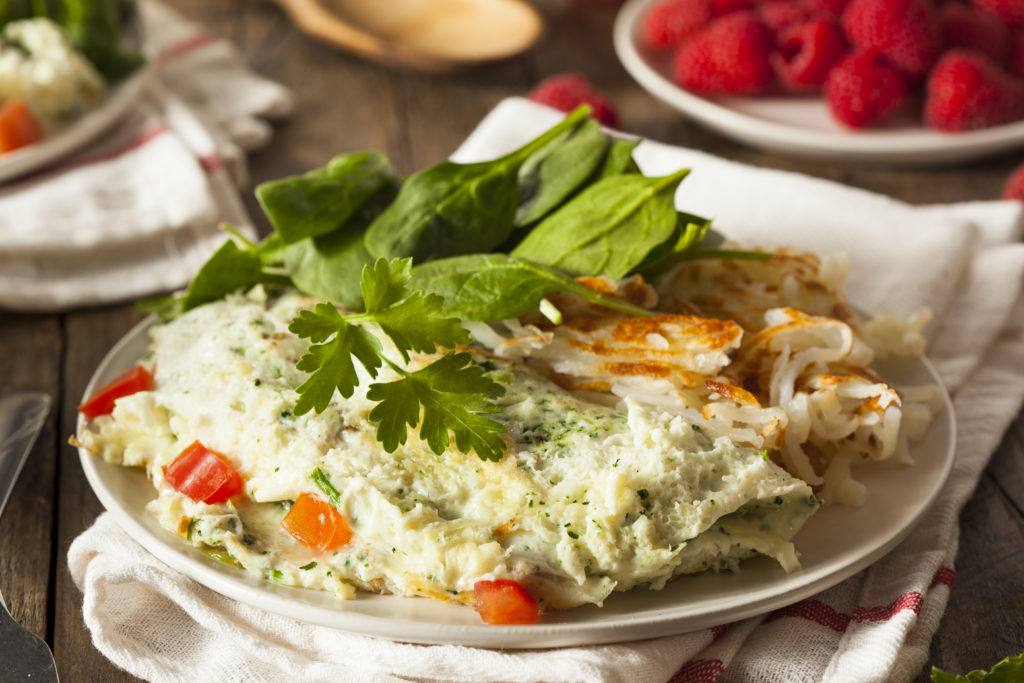
By taking out the egg yolk, most of the calories are gone, leaving more calories on the table for more food. Everyone loves more food. Pair those egg whites with some vegetables, and you have the mother of all satiating dishes.
Ingredients:
- Egg whites
- Spinach, tomatoes, mushrooms (chopped)
- Olive oil, salt, and pepper
Preparation:
- Whisk egg whites until frothy.
- Heat olive oil in a non-stick pan over medium heat.
- Add chopped vegetables and cook until softened.
- Pour egg whites over vegetables, season with salt and pepper, and cook until set. Fold and serve.
Nutritional Highlights: High-quality protein from egg whites, vitamins from vegetables, and low in calories.
Volume Eating Recipes #10: Cottage Cheese and Fruit Bowl
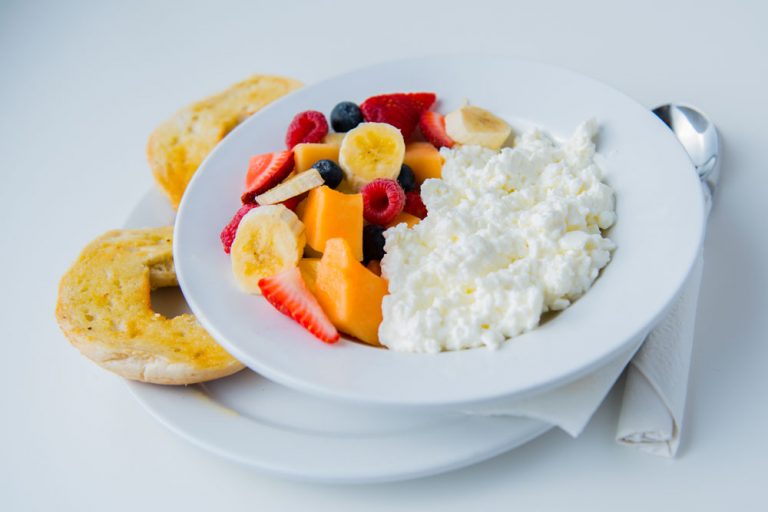
The combination of cottage cheese and fruit seems like a strange matchup. However, the saltiness of the cottage cheese pairs wonderfully with the sweetness of the fruit, leaving a delectable taste that is fiber-heavy, meaning you will not be going to bed hungry!
Ingredients:
- Cottage cheese (plain or flavored)
- Fresh fruits (pineapple, strawberries, kiwi)
- Nuts or seeds (optional for crunch)
- Honey or maple syrup (optional)
Preparation:
- Spoon cottage cheese into a bowl.
- Top with fresh fruits and nuts or seeds.
- Drizzle with honey or maple syrup if desired.
Nutritional Highlights: High in protein from cottage cheese, vitamins from fruits, and optional healthy fats from nuts/seeds.
Tips for Incorporating Volume Eating into Your Routine
To fully embrace volume eating, consider these practical tips:
- Meal Planning: Prepare meals in advance to ensure balanced nutrition and portion control.
- Portion Control: Use smaller plates to visually increase food volume.
- Healthy Substitutions: Swap ingredients with lower-calorie alternatives without compromising taste.
Conclusion
Incorporating volume eating into your daily routine offers a sustainable approach to healthy eating. By choosing foods that provide more volume per calorie, you can achieve satiety, manage weight effectively, and improve overall well-being. Try these high-protein recipes and discover how volume eating can transform your eating habits for the better!



